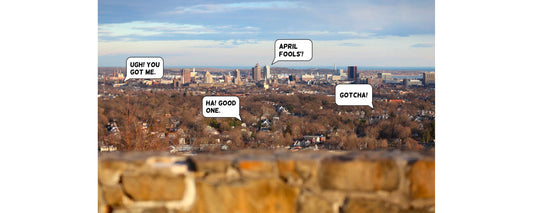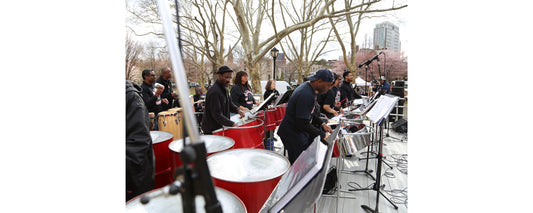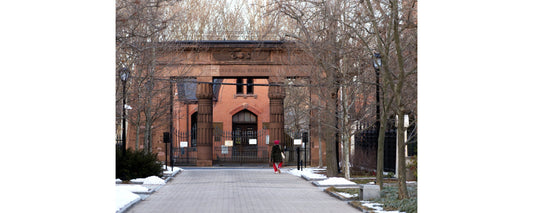This year’s was an especially tough winter, chilling and perilous and exhausting. But somehow its cruelest feature is that, after enduring so much extra hardship, our prize is no different than usual: a drab, barren landscape of muck and mire (and potholes).
New Haven’s trees, so buoying to us in late spring and summer and fall, stand brown and grey and stark. The weather, despite biting winds, is warm and wet enough to leave the ground soft and messy. The grass, extra-precious in a compact city like ours, looks pale and beaten after winter’s repeated compressions and freezings. Surveying the city from atop West Rock the other day, the land may as well be tundra for how much color there is.
But take heart in this: there’s beauty and liveliness to be found if your survey gets more specific. For instance, this week, a colorful community of anarchists has been camped out on the green.
Don’t be alarmed. They usually keep to themselves, and when they don’t, most of the rest of us seem delighted about it. They get along pretty well without property or law, needing no written contracts or rules to keep the peace. Accepting of all shapes and colors, some of them are round and scruffy; some wear angular blue coats with stripes, never changing out of them; others have a rusty shade of orange painted across their chests.
sponsored by
It’s an elevated society by many measures, including the most literal: its members spend most of their time high up in the trees. They’re birds—robins and blue jays and others less easily identified—and though they may be loftier than us, they’re not above need or argument or social concerns.
For stretches of yesterday afternoon, they constantly cried out to each other in different languages. Some of them whistle as if through lips, smooth as a cloudless sky, while others sound like they’re blowing through a tiny manmade whistle, with a fast tremolo in the tone. Some sound like high-pitched puppies asking to play. Some sound like sneaker squeaks on a basketball floor, without the gymnasium echo.
At one point, two robins began rumbling on a branch, then quickly took flight. One dive-bombed after the other, who winged away just before hitting the side of a tree trunk. Evasion successful, the chaser slammed the brakes and landed on what should’ve been the spot of impact, cooling his spindly, claw-tipped toes as if contemplating whether this fight was really all that important in the first place.
Were they siblings roughhousing? Lovers quarreling? Mortal enemies squaring off? We’ll never know, but you have to admire their ability to let it go.
Food seemed to be the primary preoccupation for most of the other birds, compelling them down to earth where insects could make a meal. They’d power-walk several feet, then wait, then peck at the ground, snagging a small bug if lucky, then power-walk several feet more. If really lucky, they’d hit pay dirt, like a gaunt-looking robin who was ecstatic to find a whole worm in his beak, hanging like a macabre string of apizza cheese. Tail feathers quivering, jaw working overtime, the bird eventually got the worm down, then hustled up to a branch to savor and digest.
Of course, if something goes in, something must come out. For all their grace and beauty, they’ve still got to poop. Enjoying a privilege few humans ever will, they do their business into high open air, over the side of a branch often 50 feet or more off the ground. Gawk from directly below at your own peril.
But do gawk, and soon. It won’t be long before this season of muck and mire is over, and the leaves and flowers whose absence we’re busy lamenting will make the birds of the New Haven Green almost impossible to spot, and what the birds do up in the trees will again be a mystery to us curious earth-walkers.
Written and photographed by Dan Mims.








